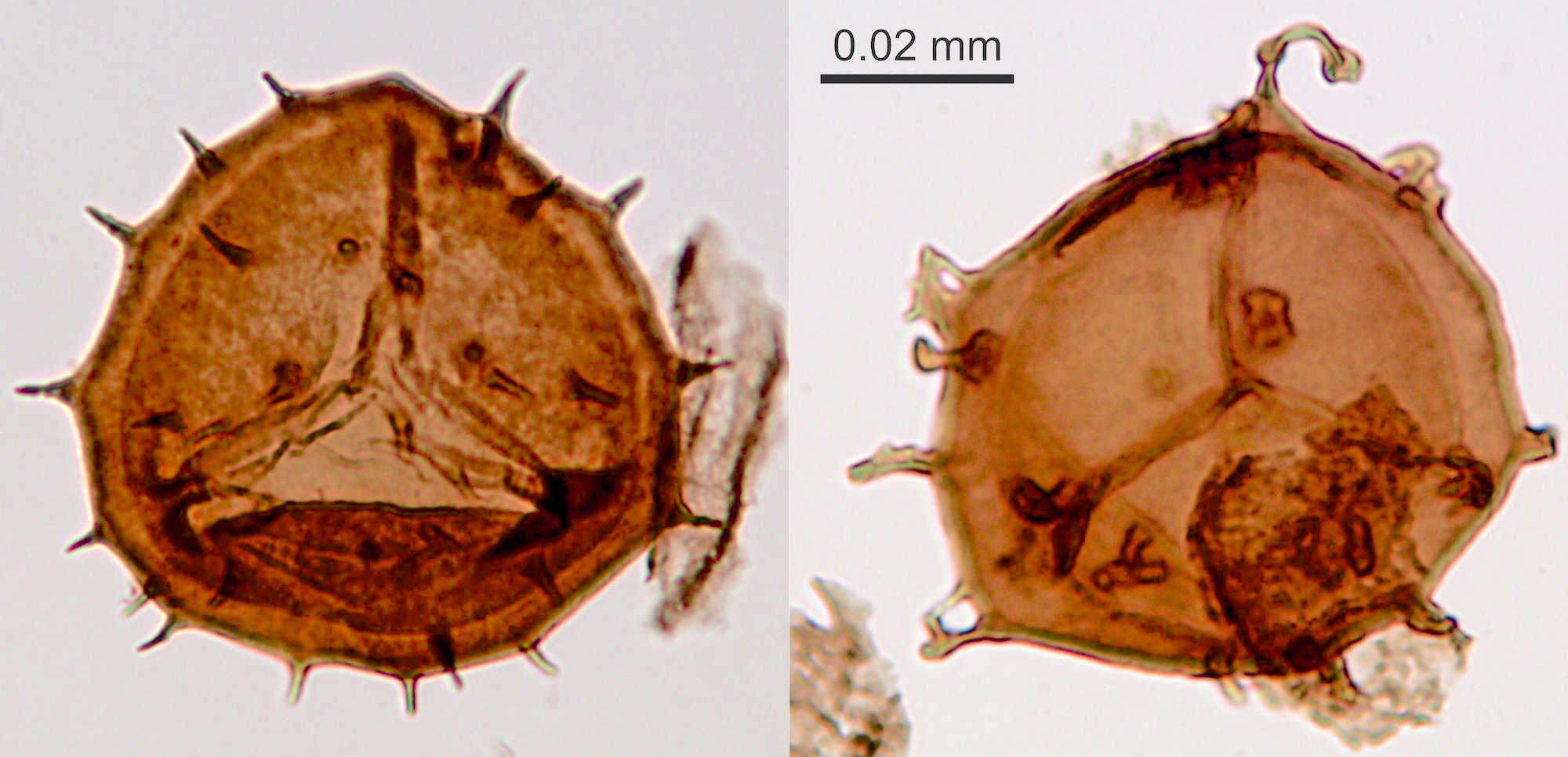Submitted by Administrator on Wed, 03/06/2020 - 12:06
359 million years ago, at the end of Devonian times, life on Earth suffered a catastrophic extinction—the cause of which has puzzled geologists for decades. Land plants and freshwater life were affected particularly badly. However, unlike other major extinctions, there is no evidence to suggest that major volcanic eruptions or asteroid impacts were to blame. Now a team of Earth scientists, including Sarah Wallace-Johnson from the University of Cambridge’s Sedgwick Museum, has found the cause.
The team analysed microfossils buried in ancient sedimentary rocks that record Devonian plant life. Their evidence shows that rapid global warming in the late Devonian caused a sudden and dramatic reduction in Earth’s protective ozone layer, allowing intensive ultraviolet (UV) radiation to penetrate the atmosphere. In doing so, it caused mortal damage to the DNA of plant reproductive structures, i.e., their pollen and spores. As a result, forest plant communities collapsed, along with the life that they supported.
Looking for the end-Devonian ‘killer’
The University of Southampton-based team collected rock samples from the polar mountains of East Greenland and high in the Bolivian Andes, where strata record the terrestrial life and environments of Late Devonian times, some 359 million years ago.
The Greenland strata were originally deposited on an ancient lakebed that, at the time, was close to the equator in the southern hemisphere, whereas the Andean samples originate from a southern polar environment. These contrasting localities allowed the effects of the Devonian extinction to be qualified on a global scale.
Both sets of rocks contain fossilised microscopic plant pollen and spores produced by the primitive plant-life of the time. Changes in their species composition and diversity over successive strata laid down from late Devonian into the early Carboniferous record a complete loss of diversity—with the extinction of at least four major groups of spores. These spores were the reproductive organs of the fern-like plants, some of which were tree-sized and formed the forest canopy. Their disappearance at the boundary marks the collapse of the forest plant community.

(L) Spore with normal spines. (R) Spore with malformed spines, resulting from UV-B damage to the cell DNA.
Most importantly, the scientists discovered that many of the spores were malformed, and that this damage is linked to dramatically elevated ultraviolet-B (UV-B) levels. UV-B radiation was evidently so high that it damaged the DNA of the spores during their development. As has been realised in recent decades, reduction in Earth’s protective ozone layer allows such damaging UV radiation to penetrate the atmosphere and threaten life. Since there were no large-scale volcanic eruptions at the time, the cause of ozone depletion is most likely to have been a major rapid climate-warming event following the final glaciation of the late Devonian ice age.
As the scientists also point out, there is a serious warning in this Late Devonian extinction, which has distinct similarities to Earth today.
Douglas Palmer
Sedgwick Museum
Additional links:
Marshall, J.E.A., Lakin, J., Troth, I., Wallace-Johnson, S.M., 2020. UV-B radiation was the Devonian-Carboniferous boundary terrestrial extinction kill mechanism. Science Advances, 6(22), eaba0768. DOI: 10.1126/sciadv.aba0768
